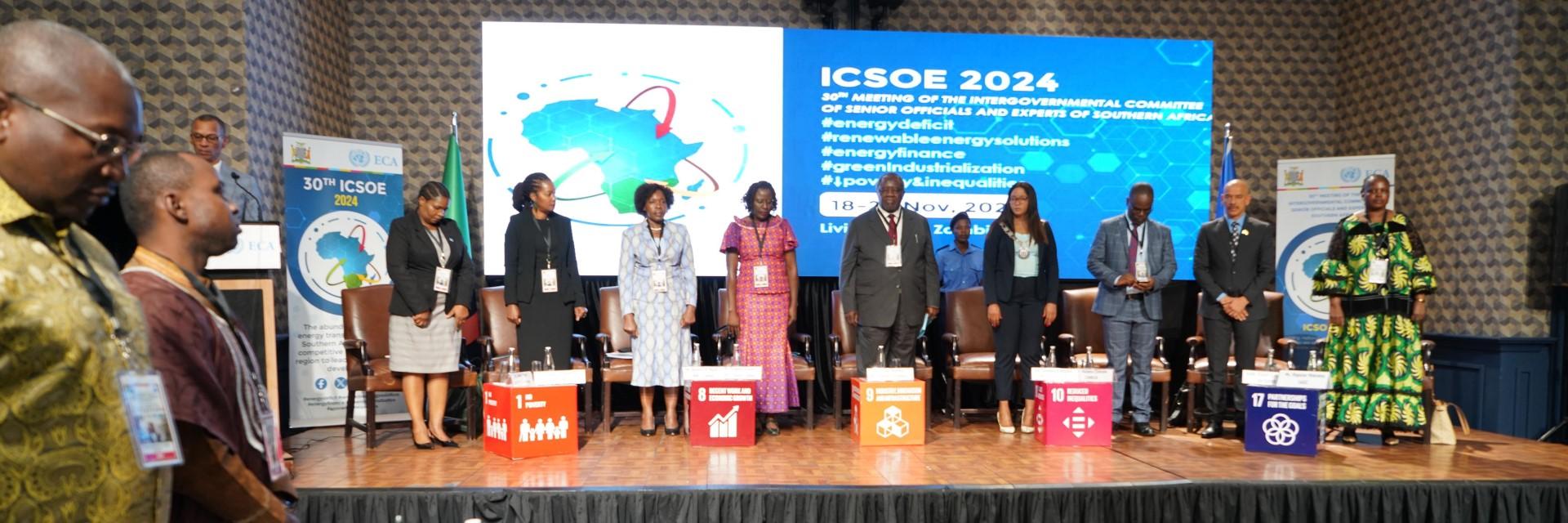
By Jeff Kapembwa
The Southern African region should diversify and exploit the untapped and abundant renewable energy resources to meet the increasing need for natural resources, deprived to more than 600 million people on the continent, and fight poverty and other social ills, the United Nations has suggested.
Zambia, like the rest of Sub-Saharan Africa, is grappling with an energy deficit that has left many of the over 3 billion inhabitants struggling to wean off poverty, with many women and children, sharing the burden of the lack of it despite the abundant fossil fuels, whose use is a catalyst for climate change.
Research shows that the lack of energy access in Africa and beyond disproportionately impacts women and children, primarily by forcing them to spend significant time collecting fuel for cooking and heating.
The deficiency has exposed the women and children to health risks from indoor air pollution, limiting their access to education and economic opportunities, and hindering their overall well-being due to the added burden of domestic chores performed without modern energy assistance; essentially trapping them in a cycle of poverty and gender inequality.
In Africa, findings show that the lack of it disproportionately affects women and children. This forces them to spend significant time collecting fuel wood for cooking, which limits their access to education, healthcare, and economic opportunities.
This shortfall often leads to health issues from smoke inhalation and impacts their overall quality of life; in rural areas, women are primarily responsible for this task, further exacerbating the issue.
The United Nations regrets the energy deficiency and urges Zambia and the rest of Sub-Saharan Africa to reconsider diversifying into renewable energy through investments in new technologies to not only reduce energy poverty and accelerate sustainable industrialization and structural transformation but also help slow down the climate change crisis buffeting Africa.
United Nations Resident Coordinator in Zambia Beatrice Mutali, notes the effects of the lack of renewable energy, which despite its abundant resource, remains under-utilized despite its ability to close the gap faced by many not only in Zambia but beyond.
Ms Mutali underscored the need to accelerate the uptake of renewable energy to help alleviate Zambia from the climatic effects it grapples with as it strives to adapt and mitigate climate change.
She notes the women and children’s vulnerability to climate change in the absence of renewable resources, warning of devastating effects on the affected people, if deprived further.
“Denying women access to energy erodes the productive capacities of countries and undermines children’s access to education and health”. She told delegates to the Intergovernmental Committee of Senior Officials (ICSOE) and Experts of Southern Africa Session hosted in Livingstone.
Economic Commission Sub-Regional Office for Southern Africa (SRO-SA) Director, Eunice Kamwendo underscored the essence of diversification from fossil fuels to the under-utilized natural energy resource with a call for urgent diversification to redress the imbalances.
Diversifying into the new energy order will ensure the sustainability of the energy supply within the energy transition efforts stressing that:
“We must transition from fossil fuels to renewable energy sources and diversify our energy mix. This transition is not just an environmental necessity; it is a pathway to social equity and economic resilience, she emphasized.”
Harnessing the abundant solar, wind, and hydropower resources, will help revolutionaries the much sought-after energy mix, enhance security, and stimulate economic growth.
Zambia, like the rest of the continent, has a rare opportunity to leverage its critical and strategic mineral resources among others, cobalt, copper, lithium, manganese, nickel, and graphite. This if enhanced, will help to position Southern Africa at the forefront of the global clean energy transition, Dr. Kamwendo noted.
Arguably, energy deficiency and poverty are deemed a significant barrier to development. An estimated 50 percent of the Southern African population and over 600 million people across the continent lack access to electricity.
Millions in Zambia are deeply reliant on biomass fuels, such as firewood and charcoal for heating, which heightens indoor pollution and health-related adverse effects, notes Southern province minister ”. Credo Nanjuwa,.
Speaking at the same occasion which attracted over 11 SADC countries, Minister Nanjuwa urged participants to use the ICSOE platform and theme of the 30th Session on energy to redress the imbalance in the SADC region.
| “Addressing the energy deficit in Southern Africa through investments in new and renewable energy technologies to reduce energy poverty and accelerate sustainable industrialization and structural transformation”
To discuss how the region’s vast new and renewable energy resources could be exploited to support the clean and just energy transition as well as help reduce poverty in the region. In a speech read on his behalf by energy Permanent Secretary Peter Mumba, Minister Nanjuwa commended (ECA) for mobilizing consensus among member States on development issues. The 11 SADC member states were implored to maintain the momentum of Southern African efforts to address the absence of harmonised policy and regulatory frameworks as well as long-term policies that could de-risk the electricity markets to encourage private investment. Minister Nanjuwa cited limited access to affordable financing for capital-intensive energy projects, insufficient transmission infrastructure, and the uncompetitive electricity market due to low tariffs, including feed-in tariffs to many challenges faced noting:. “Expanding into these renewable sources could be one of the quickest and most effective ways to bridge the energy gap and advance development goals”.
|
